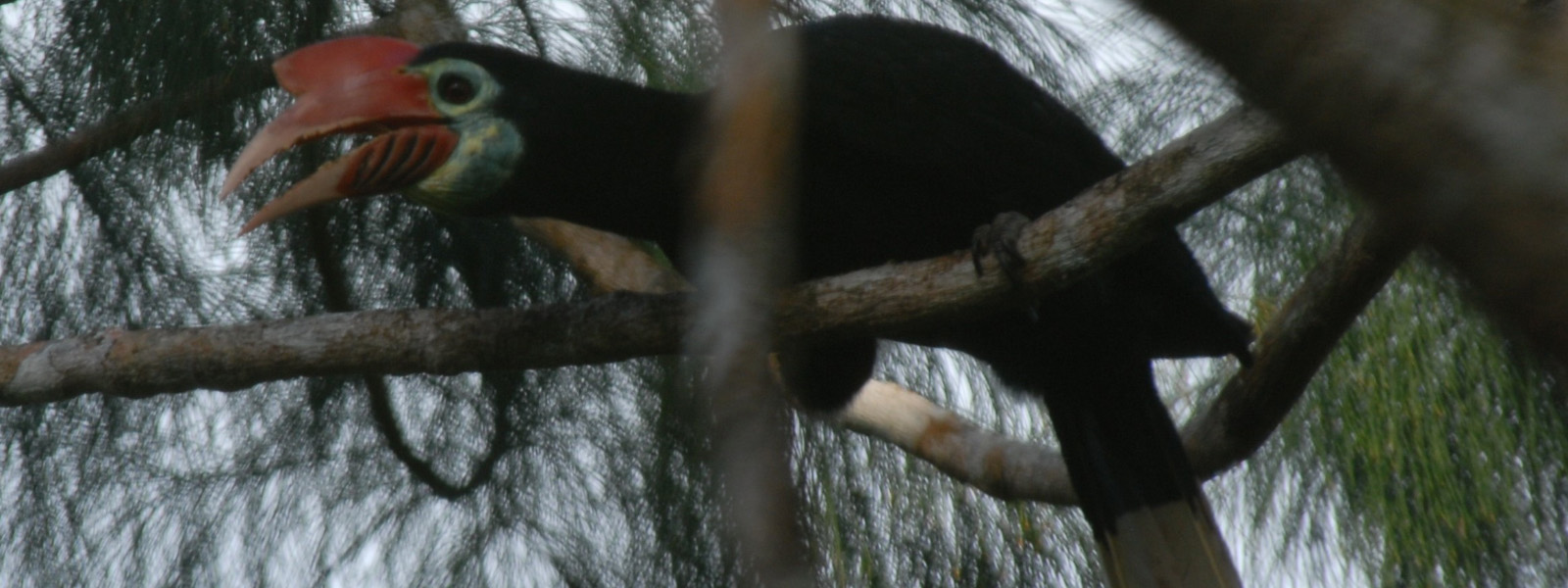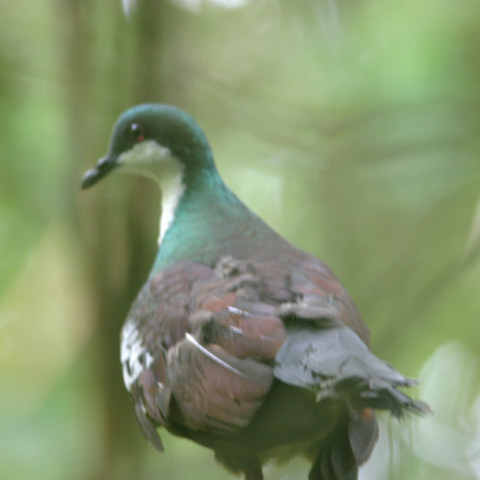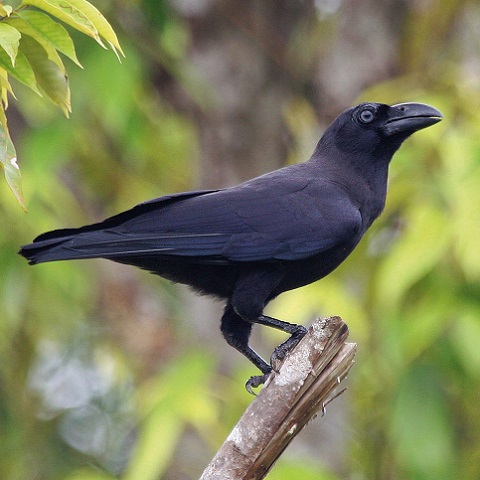Conservation Actions
Conservation and Research Actions UnderwayCITES Appendix II. Mt Talinis, designated for protection, is being managed as a geothermal reserve, and The Twin Lakes Balinsasayao Natural Park benefits from conservation funding. Other sites with recent records include Mt Kanla-on Natural Park (Negros) and Northern Negros Natural Park, which receives nominal protection. A nest-guarding scheme by PhilinCon (formerly PhilConserve) led to a reduction of nest poaching by 95% on Panay (Hembra et al. 2006), and that population can be stabilised at its current size if inroads into the forest by small-scale logging can be stopped (E. Curio in litt. 2007, 2008). The fledging of nearly 500 broods of one to three young each in the Central Panay Mountain Range was the consequence of this nest-protection scheme (Hembra et al. 2006) and the aim is to expand nest protection into more southerly parts of the CPMR (E. Curio in litt. 2007, 2008). Confiscated hornbills have been rehabilitated and released by PESCP/PhilinCon (E. Curio in litt. 2007, 2008). PhilinCon, in collaboration with CAPE, continues to monitor these crucial nest-sites at CPMR through a community-based nest warden scheme, where nest-poaching has been halted. On Negros, surveys have identified remaining populations of the species and management plans will be developed for these areas (Marseille 2013).
A five-year UNDP-GEF Biodiversity Partnership Project for the North Negros Natural Park was established in 2012. The project will support the development of conservation activities within the national park (Marseille 2013). As of December 2010, a total of 15 Rhabdotorrhinus waldeni have been successfully bred at Mari-it Wildlife Conservation Park (Lastimoza 2010). Five of these captive-bred hornbills were transferred to two facilities on Negros Island. This brings a total of eight hornbills forming the captive population in Negros Island, representing the founder populations for eventual re-introduction (Justo et al. 2011). Massive awareness campaigns have been developed by various conservation NGOs, highlighting the plight of hornbills in the Negros-Panay faunal region. Livelihood incentives such as carabao (work animals) are being given to hunters to establish permanent agricultural plots instead of shifting cultivation. Seedlings of fruit trees, basic farm tools, rice seeds and informal training are given to hunters by the Mari-it Wildlife Conservation Park to encourage them to take up alternative livelihoods (L.L. Lastimoza in litt. 2008). The Philippine Hornbill Conservation Programme was formally inaugurated in 2002. Its role is to assess the species's distribution, conservation status, threats faced and conservation actions needed as well as potentially establishing several Local Conservation Areas (LCAs) for the species (Marseille 2013).
Conservation and Research Actions Proposed
Funds should be allocated primarily to in situ protection along the lines of PhilinCon's guarding scheme (E. Curio in litt. 2007, 2008). Disseminate and act upon results from recent island-wide surveys on Panay and Negros and conduct further surveys, particularly on Panay, to identify important sites. Continue community awareness programmes to reduce hunting and illegal logging on both Panay and Negros. Work in partnership at government level to strengthen protected area legislation and improve the network in the long term, and support the development of captive breeding and reintroduction programmes.
Location Information
This species is endemic to the Western Visayas in the Philippines, where it is presumed to have occurred on three islands: Guimaras, Negros and Panay. It is now absent from Guimaras and survives only on Negros and Panay (Collar et al. 1999). By 2006, the population in the Central Panay Mountain Range (CPMR) had been found by PhilConserve (formerly PESCP) to contain 502 breeding pairs (E. Curio in litt. 2007, 2008), with 1,018 active nest holes located in 2008 (Alabado et al. 2009). There have been no breeding records since 1997 (one pair) in the north-west Panay Peninsula where, however, no systematic search has been conducted. Due to the small size of the remaining forest in the peninsula (c. 5,000 ha) any breeding there may have been sporadic and it has since almost certainly been extirpated, despite pro-active anti-poaching and other forest wardening activities orchestrated by local support groups (W. Oliver in litt. 2007). There are unconfirmed records from Balinsasayao Twin Lakes Natural Park and Calinawan Forest on Negros (P. Jakosalem in litt. 2012) and it has been suggested that the species may be functionally extinct on Negros (E. Curio in litt. 2007, 2008, J. Gonzalez in litt. 2012). However local surveys recently found the species in three separate areas on Negros (Marseille 2013). The North Negros Natural Park probably supports the largest remaining population on Negros (Marseille 2013).Geographic Range
Extant
Philippines
Population Information
There were 1,018 active nest holes located in the Central Panay Mountain Range in 2008 (Alabado et al. 2009). This represents 2,036 mature individuals, and may be appropriate to estimate the population size to number between 1,000-2,499 mature individuals. This equates to 1,500-3,749 individuals in total, rounded here to 1,500-4,000 individuals.Threats
Chronic deforestation has led to its extinction on Guimaras and its extreme scarcity elsewhere. An estimated 4% of Negros and 8% of Panay remained forested in 1988, although this has reportedly since been reduced to c. 3% and c. 6%, respectively (W. Oliver in litt. 2007). Only 10% (c. 110 km2) of this is thought to be below 1,000 m asl. It heavily utilises (at least temporally) forest fruits and thus is adversely affected by deforestation. Hunting has reportedly had severe impacts in the past, with one estimate of up to a quarter of the (then estimated) population of north-west Panay shot in a single day in 1997, although the validity of this report is uncertain. It tends to gather in fruiting trees and reportedly congregates around injured members of the flock (Marseille 2013), which makes it particularly vulnerable to hunting. Nest poaching, whether for sale of incumbent females and their dependant chicks for human consumption or into local bird trade, is the most serious threat. Poaching affected c. 50% of broods before the implementation of a nest guarding scheme which now protects about two thirds of all broods in the Central Panay Mountain Range, but until the nest guarding scheme can be expanded the remaining third are still vulnerable (W. Oliver in litt. 2007; E. Curio in litt. 2007, 2008). Habitat degradation as a result of Typhoon Haiyan in 2013 may have impacted negatively on the species (De Win 2013, J. Taylor in litt. 2013).Partners
IUCN Red List Account Link
Please click here to see the species' IUCN Red List Account page.Photo Credits
Lorenzo Vinciguerra (category and featured image)









